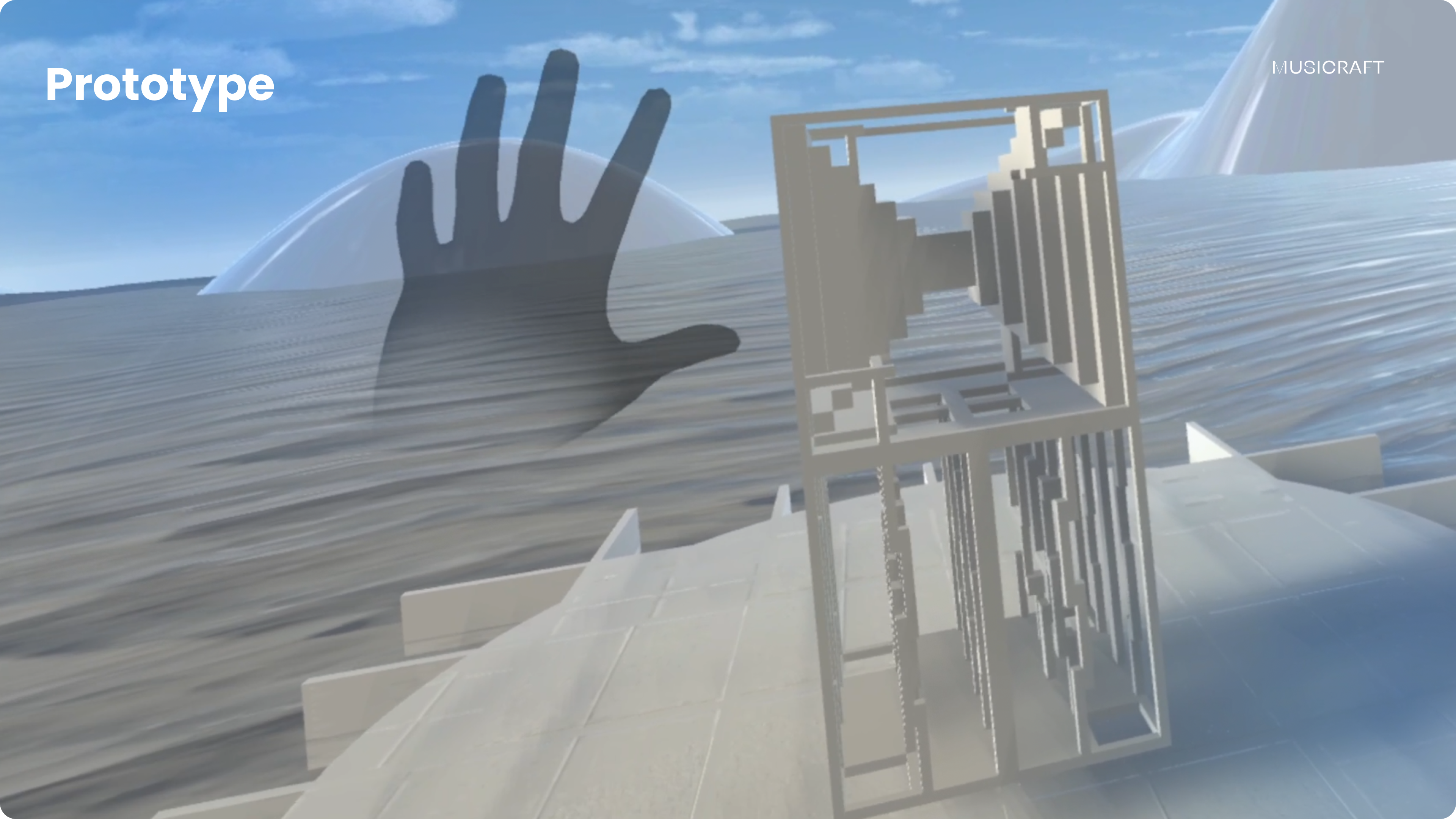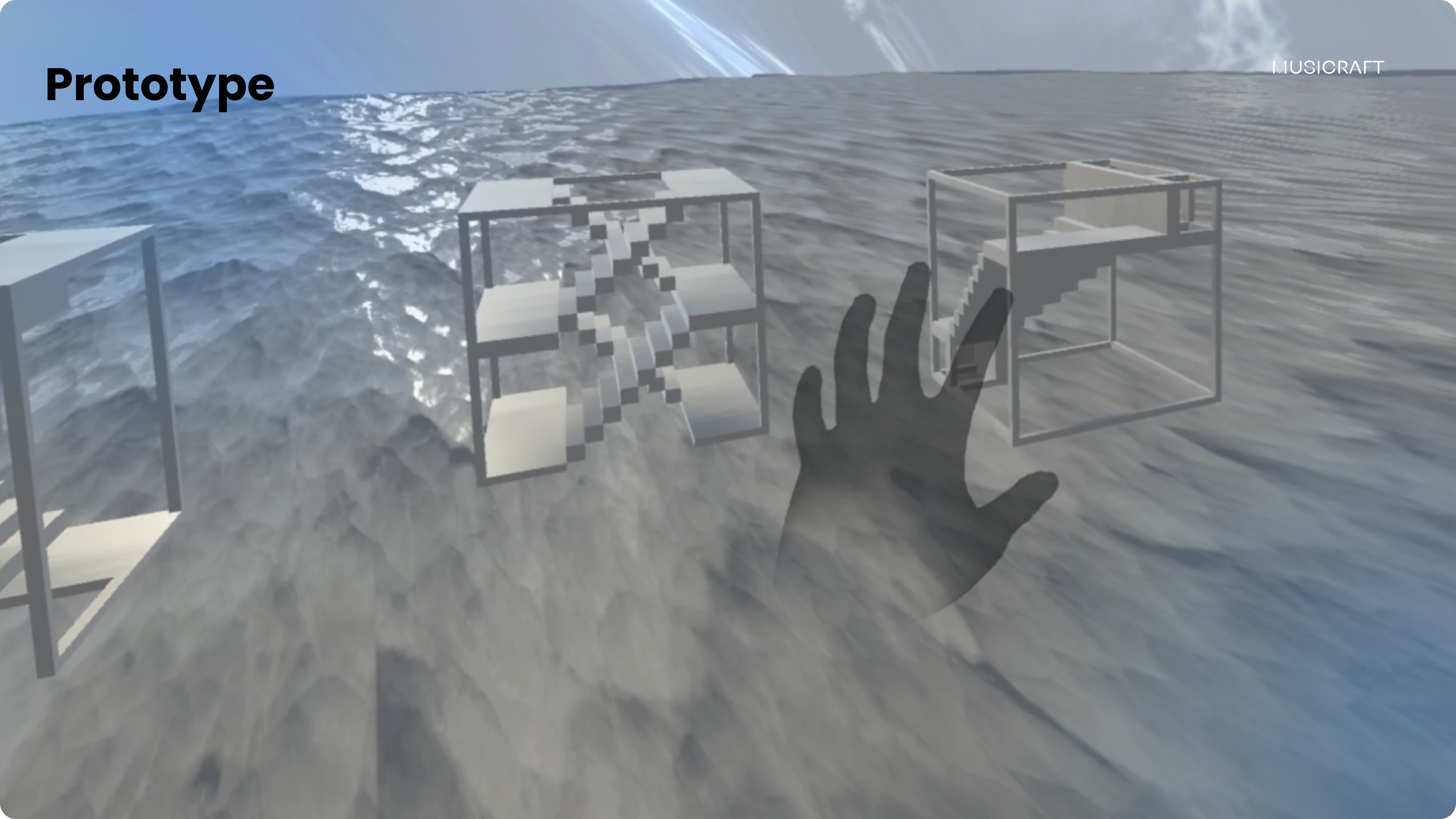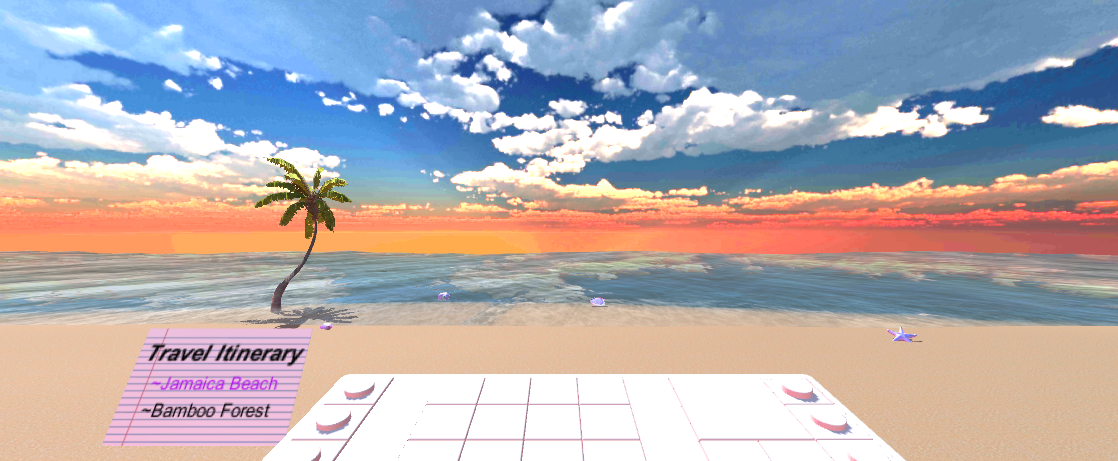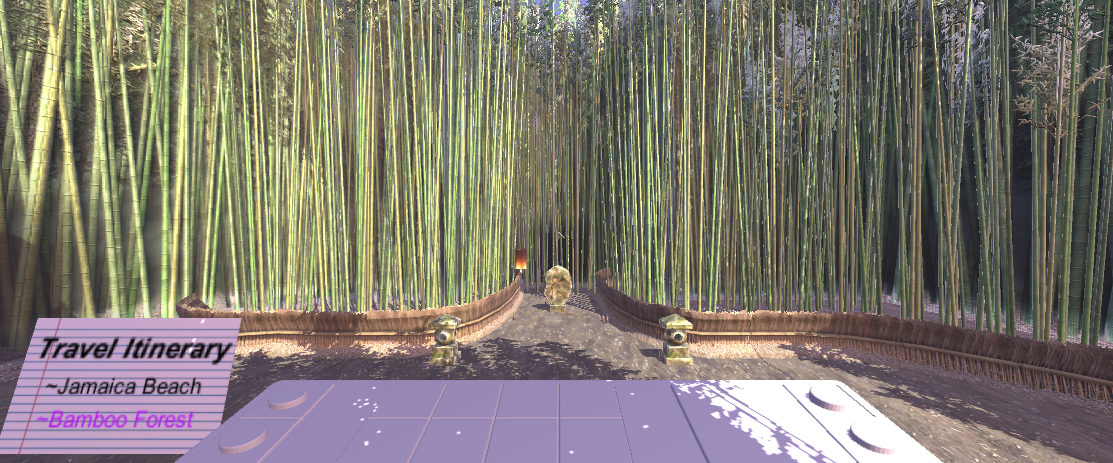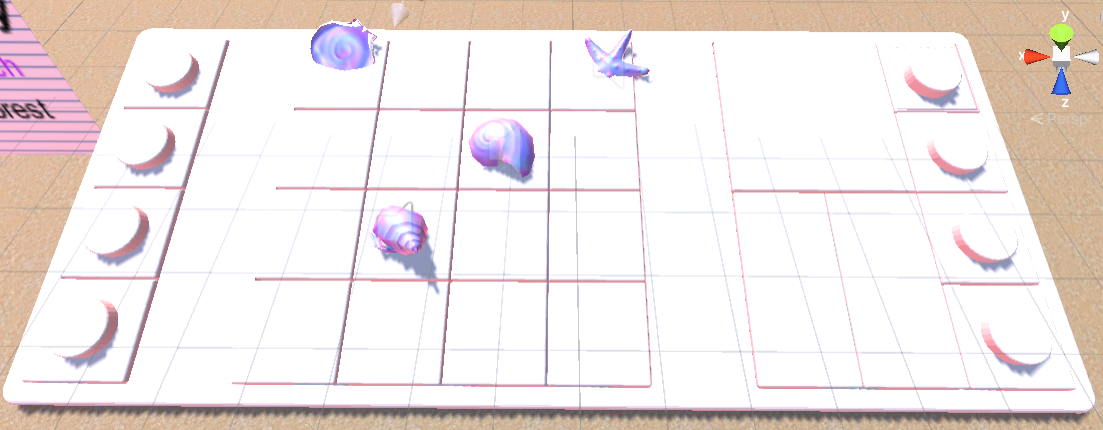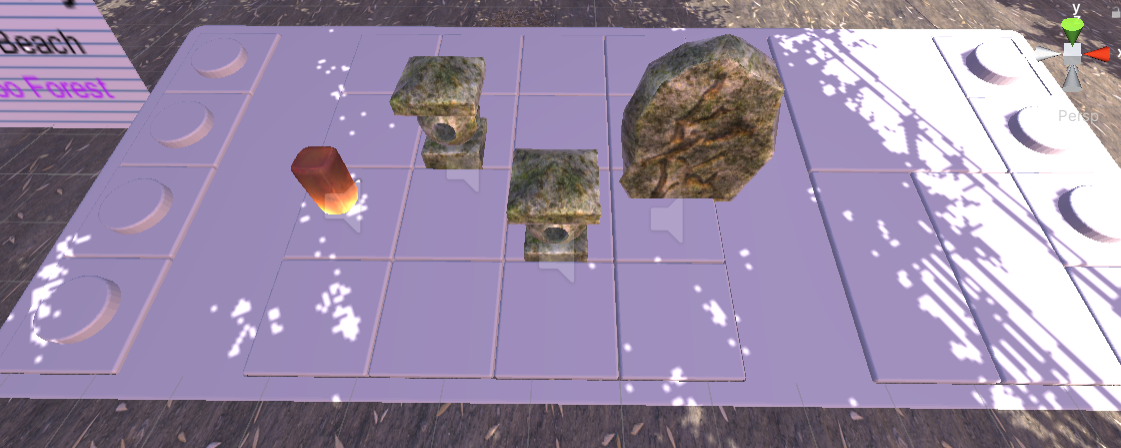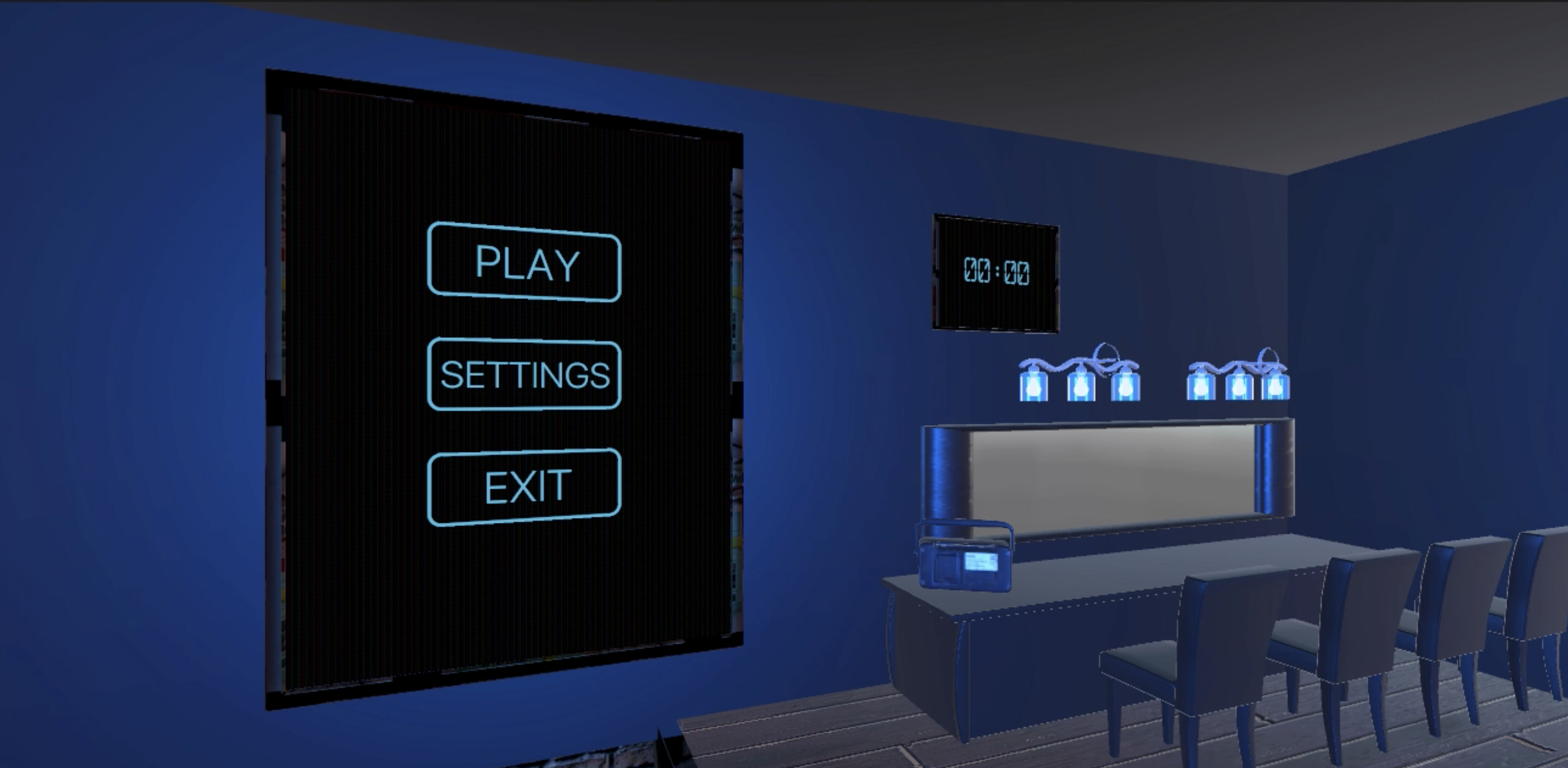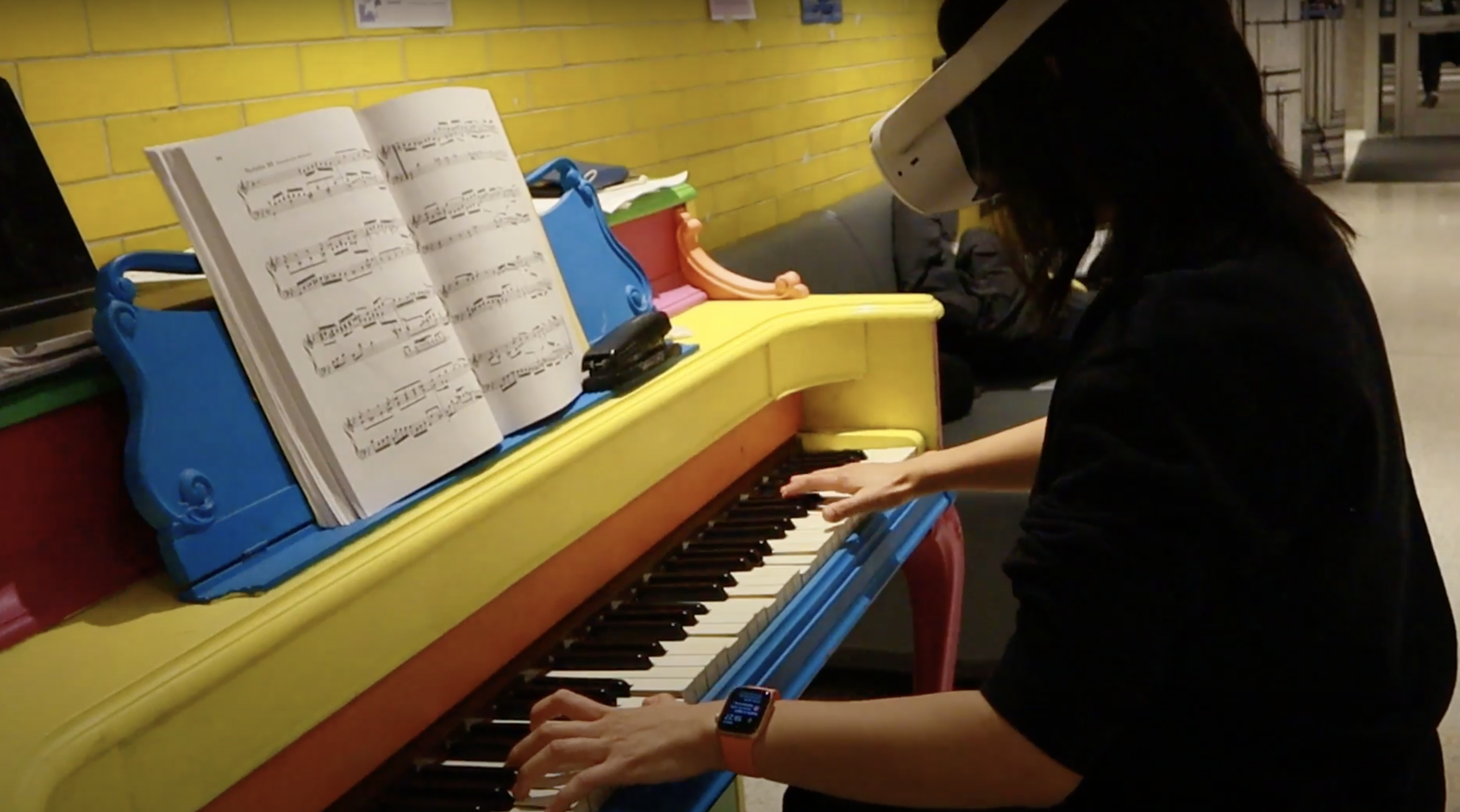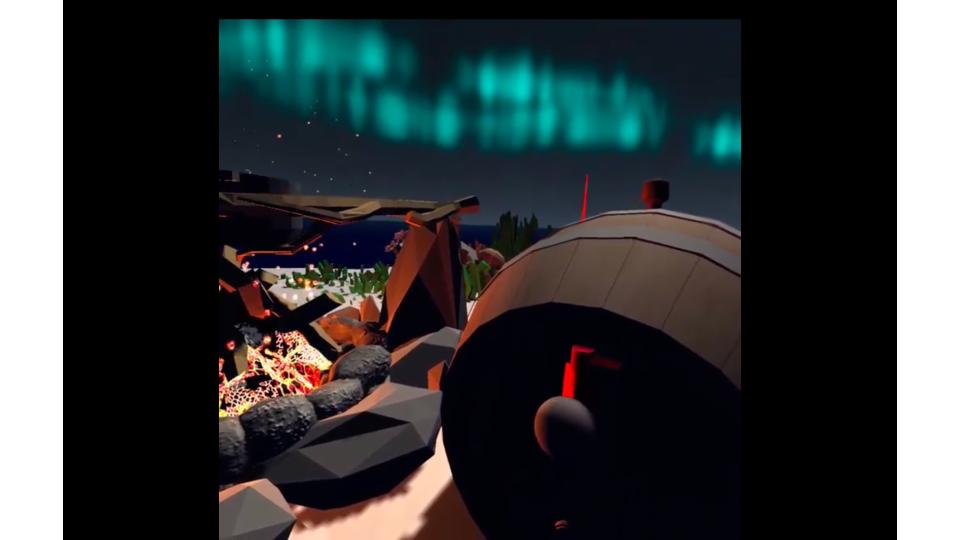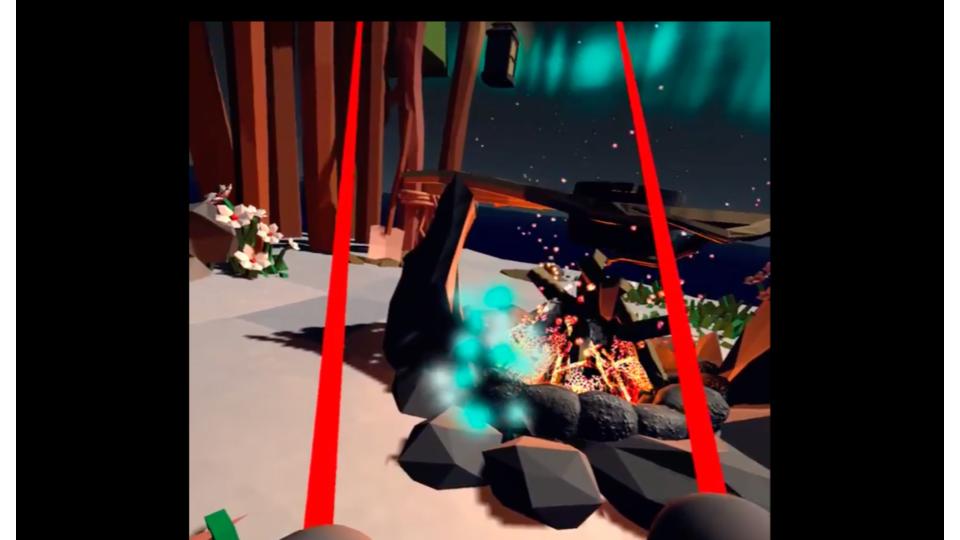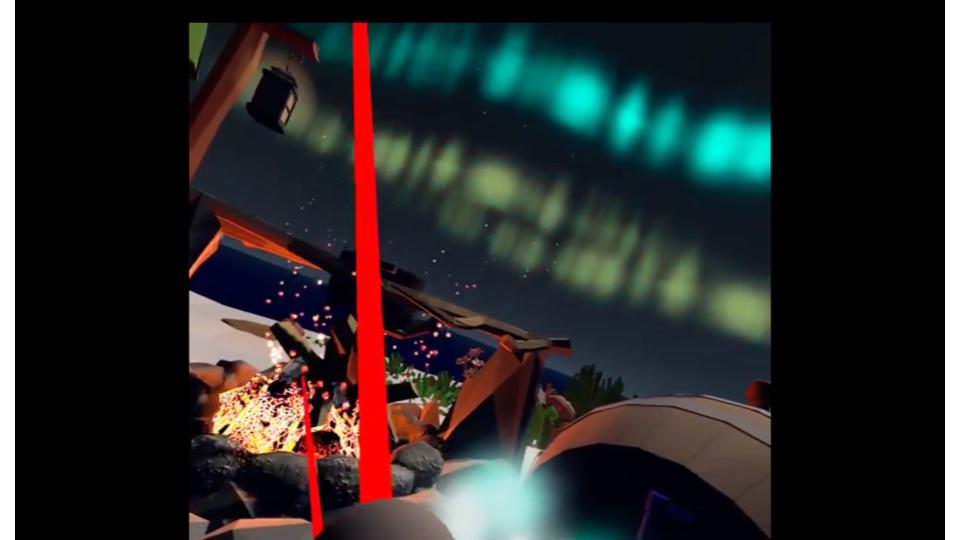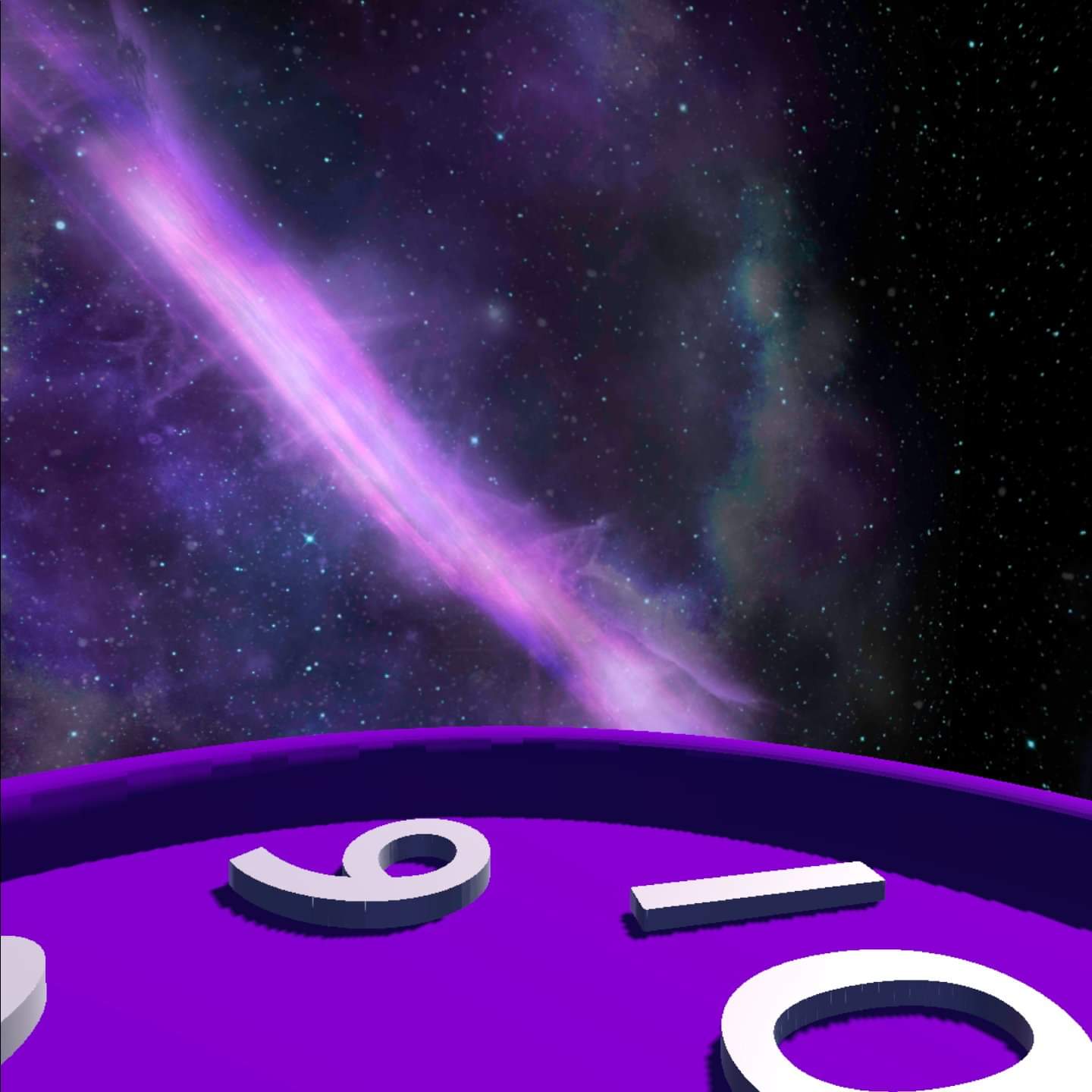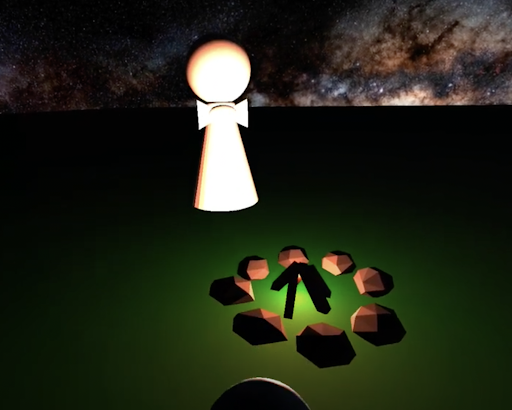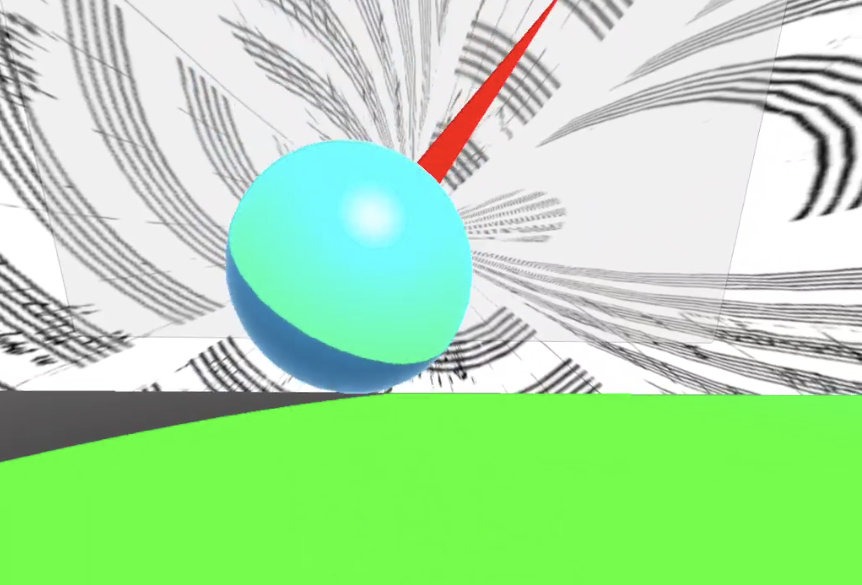Musicraft by EMMM®
Aria Xiying Bao
3D Artist, UX Designer, Unity Developer
Nix Liu Xin
3D Artist
Emmanuel Serrano
Sound Designer
Yinghou Wang
Project Manager, 3D Artist
Davide Zhang
Unity Developer, Hardware Specialist
Musicraft is a VR audio-visual gaming experience and platform where
the user creates and remixes music and architecture at the same time.
It explores the idea that architecture is frozen music and music is
flowing architecture.
In this experience, users are able to generate their own large-scale
architecture by freely interacting with the blocks. Meanwhile, audio
is presented in a synaesthetic way. Different interaction choices of the user
leads to different visual output. Each music rhythm, respective building
block as a tableau, and the composing of which illustrates a dynamic,
non-linear, unpredictable, potentially infinite structure. Music, composition,
special effects—everything, down to an open experience allowing a non-musician,
non-3D builder, or non-visual artist to create their own piece.
We look forward to checking out users’ composition of music and architecture
through their constant imagination and experiments and uncovering what’s
possible in the remix of both in Musicraft.
APK link
Magic
Jessica Boye-Doe
Nia-Simone Egerton
Prim Rattanathumawat
Yubo Zhao
Jose Pescador
For our Final project our group decided to create a sequencer that
interacted with the music inside of the environment. Along with playing
around with sounds inside of our world, we wanted our user to get a taste
of what it is like to travel across the globe. Inside of our project,
the user will be introduced to different environments and music.
In turn the player will be invited to play around with the objects they see.
Our goal is for the user to create music with the items in front of them.
We want our player to leave the experience with a feeling of satisfaction
and an intrigue to continue exploring parts of the world and composition.
APK link
StageFright
Ilknur Aspir
Unity Implementation, Anxiety Intervention
Lancelot Blanchard
User Study, Programming
Ingrid Chan
Literature Review, Anxiety Intervention, Immersion
Lleyton Elliott
Hardware Specialist / Biometrics, Literature Review
Kevin Huang
Programming, Project Manager, Biometrics
Jenny Jiang
Immersion, Project Manager, Biometrics
Myron Layese
Sound Design, Biometrics, Programming
Per Pintaric
Aesthetics and UI Design, Immersion
StageFright is a Mixed Reality app aiming to help performing musicians
deliver more confident and relaxed performances in person. It provides a
VR performance venue environment for the user to play their instrument in,
as well as a waiting room and backstage area to simulate the full experience
of preparing for a performance. The app offers helpful reminders and provides
research-based CBT (Cognitive Behavioral Therapy) techniques to help the user relax.
These are triggered by biometric sensors that detect change in the user’s sweat level.
The user experience is as follows:
(waiting room → backstage → performance stage → waiting room).
This process introduces and assists the musician with
1) getting comfortable rehearsing in the venue and
2) using biometric feedback to help the performer regulate their anxiety levels
through visual and auditory guidance.
APK link
Aura
Kenny Lam
3D Level Design and Unity Programming
Mrinmoy Saha
3D Level Design and Unity Programming
Alexander Antaya
Project Manager and Audio Director/Composer
Cynthia Liu
Executive Audio Designer
“Aura” is a meditative, immersive VR experience that is (hopefully)
aesthetically pleasing and heart-warming. In the story, the protagonist
is a snow spirit, and collects aura (mystic particles) to orchestrate
an aurora show at night. The scene is an interactive experience
where the player/snow spirit ingests aura stored in a magic tank, in an
arctic setting. In the end, as the player ingests/interacts with the aura
coming out of the tank, they will orchestrate an aurora show in the night
sky with audio and visual elements.
APK link
Tone Soup
Lucy Nester
Lead Unity Developer, Instrument Design, Environment Design
Ari Davids
Sound and Music Design
Josh Kwok
Asset Design and Sound Effects
Peggy Yin
Conceptual/Narrative Design, Unity Developer, Environment Design
In virtual reality, music becomes technology: what we can hear and perceive as music is controlled
entirely by what we can electronically synthesize, produce, and generate. This opens up worlds of
possibility for the creation of new forms of music making, catalyzed by increased opportunities for radical
collaboration, experimentation with neurological and physical laws, and a soundscape that has yet to be
defined. Our project, Tone Soup, introduces an intuitive gestural interface to foster this sort of intense
musical exchange and experimentation. Through collective user input, our VR experience will help
compose the “folk music” of the metaverse from folk narratives of what it means for music—and
technology—to be live.
APK link
 Ken Zolot is a Senior Lecturer in the department of Mechanical Engineering at MIT,
and a Professor of Creative Entrepreneurship at The Berklee College of Music.
His other work can be found at http://www.mit.edu/people/zolot
Ken Zolot is a Senior Lecturer in the department of Mechanical Engineering at MIT,
and a Professor of Creative Entrepreneurship at The Berklee College of Music.
His other work can be found at http://www.mit.edu/people/zolot
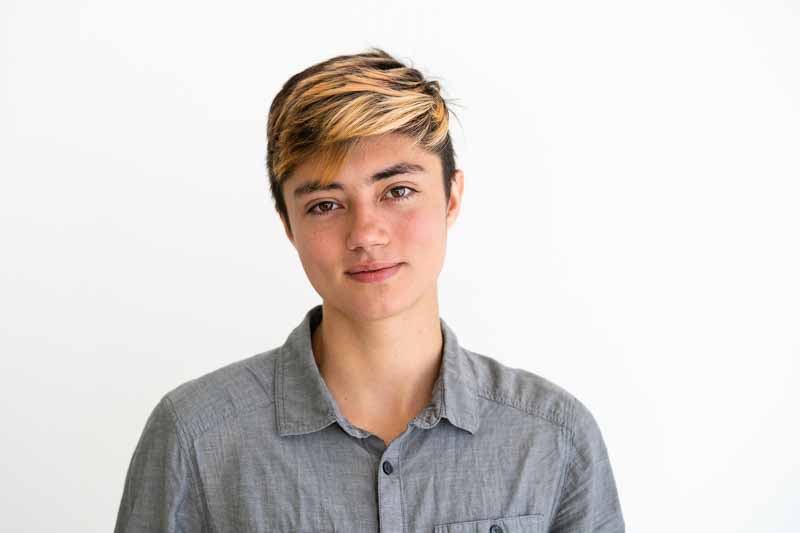 Aubrey is a Unity developer and VR interaction designer. He holds an MS from
the MIT Media Lab, where he wrote the thesis
An Integrated System for Interaction in Virtual Environments
as a memeber of the Fluid Interfaces Group,
and BAs from Wellesley College in Political Science and Media Arts and Sciences.
His other work can be found at aubreysimonson.com.
He also made this website :)
Aubrey is a Unity developer and VR interaction designer. He holds an MS from
the MIT Media Lab, where he wrote the thesis
An Integrated System for Interaction in Virtual Environments
as a memeber of the Fluid Interfaces Group,
and BAs from Wellesley College in Political Science and Media Arts and Sciences.
His other work can be found at aubreysimonson.com.
He also made this website :)
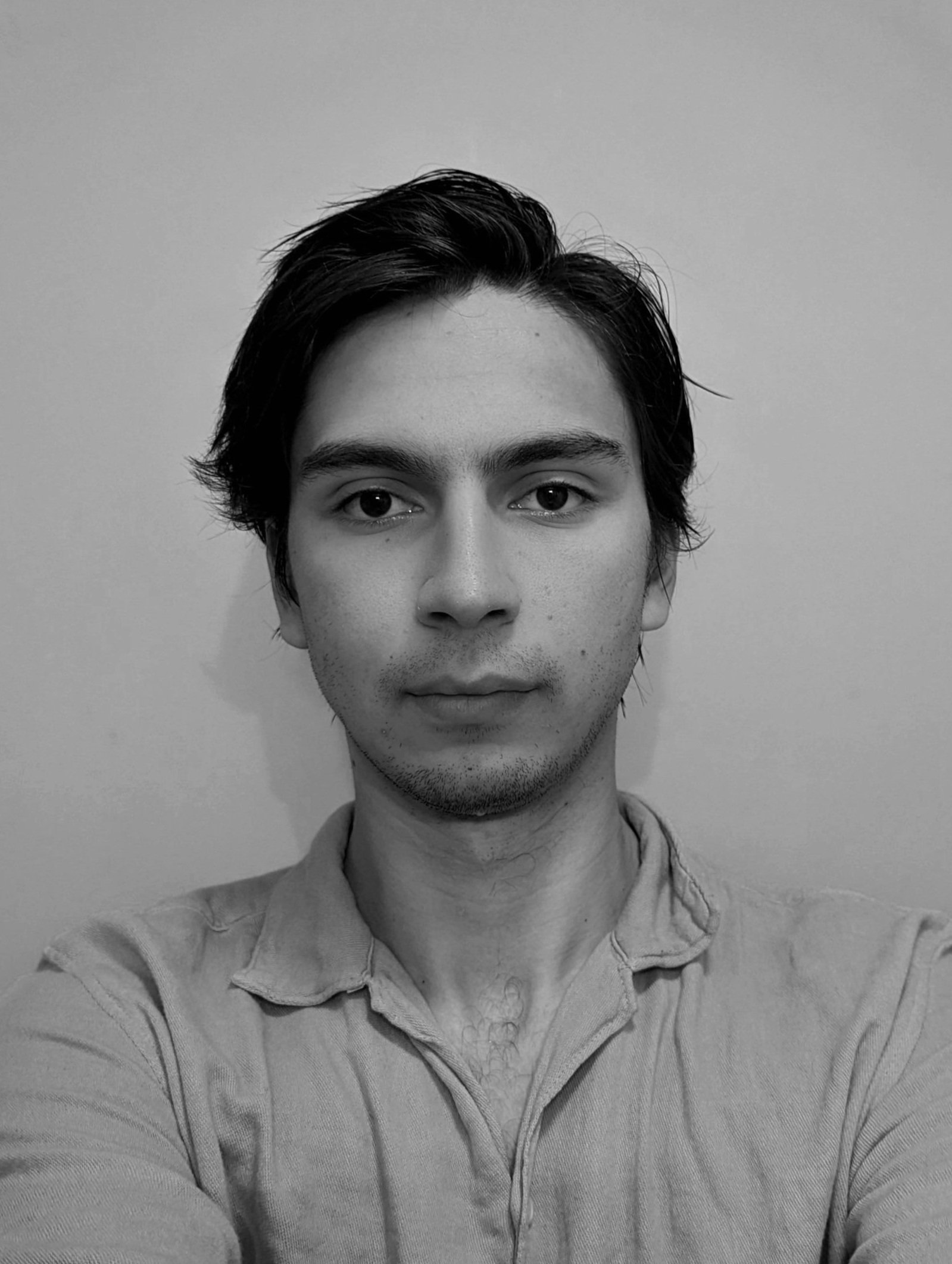 Mateo is an Ecuadorian developer and sound artist and recent graduate of
Berklee College of Music. His research focuses on exploring
computer code as an expressive medium, procedural audio, extended reality,
psychoacoustics, and human-computer interaction. His other work can be found
at mateolarreaferro.com
Mateo is an Ecuadorian developer and sound artist and recent graduate of
Berklee College of Music. His research focuses on exploring
computer code as an expressive medium, procedural audio, extended reality,
psychoacoustics, and human-computer interaction. His other work can be found
at mateolarreaferro.com
 Rob Jaczko is an independent recording engineer and record producer,
and Chair, Music Production and Engineering Dept. at Berklee College of Music.
He is a former staff engineer at A&M Studios, Hollywood, California, where
his engineering credits include Aerosmith, Vinnie Colaiuta, Sheryl Crow, Crowded House, and Hall and Oates.
He is also the founder of View Works, specializing in stereoscopic 3D imaging and immersive audio solutions.
Rob Jaczko is an independent recording engineer and record producer,
and Chair, Music Production and Engineering Dept. at Berklee College of Music.
He is a former staff engineer at A&M Studios, Hollywood, California, where
his engineering credits include Aerosmith, Vinnie Colaiuta, Sheryl Crow, Crowded House, and Hall and Oates.
He is also the founder of View Works, specializing in stereoscopic 3D imaging and immersive audio solutions.
